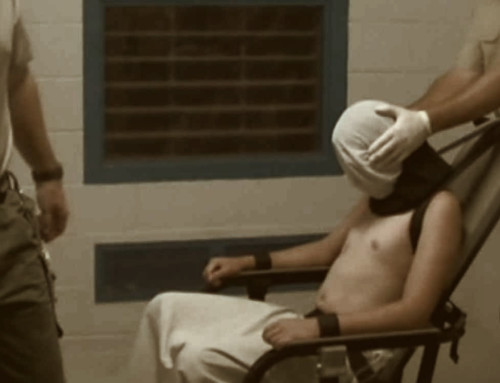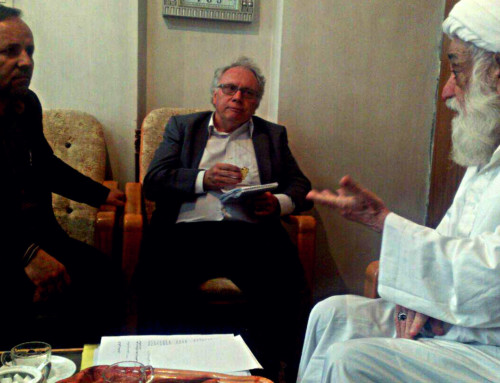Australian governments have so often been an international embarrassment to its citizens in recent times. On family and institutional violence, in contrast, they have really begun to grasp the nettle. Former Prime Minister Julia Guillard’s government recognized that Australia had a widespread problem of different kinds of institutions engaging in sexual abuse of those in their care.
Investigative commissions were established into sexual abuse in the Australian military and a Royal Commission into Institutional Responses to Child Sexual Abuse. These commissions have been engaged in a long march through the institutions, battalion by battalion, navy ship by ship, religious order by order, denomination by denomination, school by school. This work has uncovered shocking patterns of abuse in so many different kinds of institutions. It is too early to judge whether their work will put in place the transformative changes needed to institutions of domination in Australian society. All we can say for the moment is that their Commissioners show promise in their listening and investigative diligence.
A number of enquiries have also been established into family violence. The most systematic and recent of these reported on 30 March in the State of Victoria. It is not too early to pass judgment on its quality and initial impact.
The Victoria Royal Commission on Family Violence chaired by Victorian Supreme Court Judge Marcia Neave is a stupendously impressive piece of social policy. Its immediate policy impact has been most unusual: the government of Victoria has accepted and committed to implement all 227 of its recommendations.

Commissioner Marcia Neave gives her opening remarks at the Royal Commission into Family Violence. Melbourne, July 13, 2015. (AAP Image/David Crosling)
Let me illustrate the fine-grained quality of the Royal Commission’s policy eye with Recommendation 111, which goes to the problem of women not being able to leave dominating partners because they cannot access bank accounts:
The Victorian Government encourage the Australian Bankers’ Association, through its Financial Abuse Prevention Working Group, to develop a family violence–specific industry guideline [within 12 months]. This should be supported by training and education for relevant banking staff, to help them understand, identify and deal with economic abuse associated with family violence.
By 5 April the National Australia Bank and then the Australian Bankers’ Association had already agreed to implement this recommendation nationally. Let us hope banks around the globe will implement similar gendered violence customer care and social support policies. I will not do my own long march through the other 226 recommendations, most of them equally thoughtful and innovative. Instead I urge readers to look at the report here.
Much of the media commentary has focused on
- Support and Safety Hubs in local communities throughout Victoria, to make it easier for victims to find help and gain access to a greater range of services
- New laws to ensure that privacy considerations do not trump victims’ safety—with a Central Information Point to funnel information about perpetrators to the Hubs
- an immediate funding boost to services that support victims and families, additional resources for Aboriginal community initiatives and a dedicated funding stream for preventing family violence
- a ‘blitz’ to rehouse women and children forced to leave their homes, supported by expanded individual funding packages
- an independent Family Violence Agency to hold government to account.
The Report has an ethos of “responsiveness to victim needs”. Compared to previous documents on the subject it shifts the emphasis to prevention and early intervention. It emphasizes for example the need to learn how to intervene early when adolescent boys are assaulting their mothers or sisters, for example.
One thing I think see as visionary policy is an openness to restorative justice. Pages 30-31 of the Summary Report concludes:
There are a number of potential benefits associated with a restorative justice approach:
- its potential to deliver better outcomes for victims than the adversarial justice system because it is able to provide a forum for victims to be heard on their own terms and offers a process that is tailored to individual women’s needs, and informed by their own choices
- its particular relevance in those cases where the victim does not wish to separate from the perpetrator but wants the abuse to stop, or where violence has been used by an adolescent against their parents
- the prospect of encouraging perpetrators to acknowledge the impacts of their behaviour and to recognise its effects on the victim.
The Commission examined this matter carefully, particularly in light of concerns that such an approach might be manipulated by perpetrators and could undermine the important gains that have been made in ensuring that family violence is treated as a public concern rather than simply a private matter between individuals.
The Commission is persuaded that, with robust safeguards in place and as an additional option for (not a substitute or precondition for) pursuing action through the courts, a restorative justice process should be made available to victims who wish to pursue such an option. Restorative justice processes have the potential to meet a broad range of victims’ needs that might not always be met through the courts and to help victims recover from the impact of the abuse they have suffered.
The development of a restorative justice approach should proceed cautiously. In consultation with victims’ representatives and experts in restorative justice, the Department of Justice and Regulation should develop a framework and pilot program for the delivery of restorative justice options for victims of family violence that are victim-driven, incorporate robust safeguards, are guided by international best practice, and are delivered by suitably skilled and qualified facilitators.
Recommendation 122 states:
The Department of Justice and Regulation, in consultation with victims’ representatives and experts in restorative justice, develop a framework and pilot program for the delivery of restorative justice options for victims of family violence. The framework and pilot program should have victims at their centre, incorporate strong safeguards, be based on international best practice, and be delivered by appropriately skilled and qualified facilitators [within two years].
With this recommendation, let us hope Australia can become the healing edge and the empowering edge of restorative justice R & D once more.
I find it amazing that the Victorian government has accepted Recommendation 199 that puts an independent agency above it to hold its implementation of the report accountable:
The Victorian Government establish an independent statutory Family Violence Agency [by 1 July 2017] to:
- monitor and report on implementation of the Commission’s recommendations and of the Statewide Family Violence Action Plan
- provide expert policy advice on family violence at the request of Cabinet, the Premier or the Victorian Secretaries Board
- undertake and commission applied research, policy and evidence reviews and conduct own-motion inquiries into the operation of the family violence system
All power to the people and government of Victoria. Let the long march through our institutions of domination continue.






Great article and interesting to pick up on the restorative justice recommendation – I also think it is of great interest given the number of women not in a position to separate
Cathy Humphreys
Professor of Social Work, University of Melbourne
Restorative justice as an alternative to punitive strategies is an interesting response to family violence and domestic abuse in particular. However, there are situations when it is in the best interest of health and wellness that a separation/exclusion is warranted. Whether parent/child or spousal abuses, safety first, then interventions can attempt to restore harmonious family functioning.
Women aren’t always capable of leaving abusive situations for a variety of reasons, many of which are as a result of the psychological abuse that contribute to their diminished self esteem and loss of ‘agency’. The best interventions ensure safety first, esp. when children are impacted, empower them with tools to rebuild, repurpose their lives, while providing appropriate supportive services.
On reading the summary a point was made about early intervention and teaching children about respectful social relationships as soon as children communicate. Having developed and implemented restorative practices with 3 and 4 year old pre-schoolers with communication difficulties and behaviours resulted in positive change and children modelling to each other over short time. Safer trusting environment, inclusive play and increases in educational outcomes overall. Given the opportunity and positive RJ processes and support children can lead change.
Thanks for these thoughtful comments Cathy, JaDonnia and Sian. Safety first and early intervention are such important principles and we have much to learn through practice and research about how better to realise them.
John Braithwaite